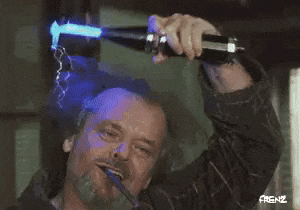Holos University, Lee’s Summit, Missouri, 1992
By Meg Patterson, M.D., F.R.C.S.E.
Noel V. Flood, R.M.N.
& Lorne Patterson, R.M.N
NeuroElectric Therapy (NET) is a benign and rapid, non-pharmacological detoxification treatment for the chemical dependent, either in-patient or out-patient, using very small amounts of electric current transcranially, with electrodes applied above the mastoid process. The pocket size stimulator is used continuously for 7 to 10 days (3-4 days for nicotine), without supplementary drugs. Within this treatment period it eliminates the acute symptoms and also ameliorates the Chronic Withdrawal Syndrome, which otherwise could last 18 months or longer, to a very substantial degree. By the end of treatment, 95% of 102 consecutive patients claimed they were free of craving, 75% that they were free of anxiety. NET has a reported drop-out rate of 1.6% over a period of seven years. The basis of this therapeutic success has been the marriage of precision clinical techniques to highly specific combinations of electrical current parameters, both developed over 20 years of reported clinical and research work. It is suggested that the mechanism of action may be the rapid restoration to normal of abnormal neurotransmitter levels by specific electrical signals. Clinical treatments and double-blind studies are briefly described and reviewed, with new data on sleep effects.
INTRODUCTION
NeuroElectric Therapy (NET) has its roots in the serendipitous discovery 20 years ago by Dr. H. L. Wen (a surgical colleague of one of the
authors), in the Hong Kong hospital where she was head of surgery.
It was observed that the electroacupuncture analgesia under investigation as a replacement for general anesthesia also brought a short one-hour cessation of withdrawal symptomatology in some opioid addicted patients. After receiving the electroacupuncture, they volunteered the information that not only had their withdrawals stopped (since they could not obtain their regular supply of drugs whilst in hospital), but that the treatment had made them feel as if they had had a compensatory dose of their opium or heroin.
Several highly trained Chinese acupuncturists in Hong Kong then attempted to reproduce this rapid detoxification from opioids, using traditional acupuncture techniques, without success. They could achieve rapid improvement in acute or chronic pain conditions, but in chemical dependency only a slow amelioration of some symptoms over a period of several weeks or months was possible.
The Chinese pulse generator used for the electroacupuncture coincidentally could deliver an electrical signal of only 111 Hz (pulses per second), a frequency later found to be within the range appropriate for opioid detoxification.
Experiments with a re-designed stimulator which could produce 250 Hz, elicited from addicts that they experienced a distinct euphoria which the previous treatments had not induced. This discovery suggested that different parameters could lead to different clinical effects and Dr Patterson became convinced it was the electrical component of the treatment which had significant influence in withdrawal cessation, and not the acupuncture system which had never proved successful in treating the widespread opium use of earlier regimes in China.
subtle-energies-meg-patterson


Leave a Reply